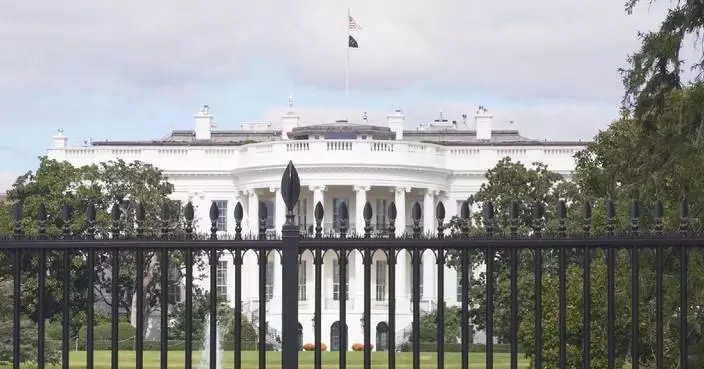The China National Archives of Publications and Culture (CNAPC) has significantly expanded its repository with over 15,000 new physical and digital donations, enriching its collection with rare texts and artifacts to preserve and exhibit the depth of Chinese cultural heritage.
On Friday, these donations were added to the CNAPC collection with a ceremony held in the headquarters based in Beijing, encompassing items from public institutions and private collectors nationwide. This batch includes 131 terabytes (TB) of digital versions, along with various historical and cultural artifacts.
Among the array of donations are original ancient texts, premium ancient book publications, engraved copies, and palm leaf manuscripts. Noteworthy items also include documents from the Republic of China (1912-1949) era, financial archives such as the People's Victory Bond, and diverse digital document databases.
These items are showcased in the "Wenhan Juzhen" exhibition at the CNAPC, featuring remarkable pieces like a Western Xia Dynasty (1032-1227) movable type print. This print, one of the oldest known Chinese movable type prints, offers crucial evidence regarding the invention and dissemination of movable type printing in China.
Also on display are over 1,000 pages of letters from prominent late Qing Dynasty (1644-1911) figures. These include correspondence from military and administrative officials such as Li Hongzhang (1823-1901) and Zeng Guoquan (1824- 1890), as well as Ding Baozhen (1820-1886), who served as the governor of Sichuan Province, shedding light on the period's political and social nuances.
The letters are invaluable for understanding the dynamics of the late Qing period, including the extended French occupation of Vietnam and the potential threats to Yunnan via the Lancang River. They also reveal how Li Hongzhang urged Ding Baozhen to allocate funds from Sichuan's salt sales for emergency needs.
Additionally, the exhibition includes items that reflect daily life and societal evolution, such as a bamboo-woven representation of the "Riverside Scene at Qingming Festival" that reflects natural and cultural landscape of the Song Dynasty (960-1127), and the "People's Victory Bond," which marked the first sovereign bond issued in China after 1949.
"These are extremely precious. They mirror the entire developmental trajectory of Chinese securities through various periods," said Liu Mingwei, chairman of the China Collectors Association.
"Contributions from private and individual collections have been donated to the state, becoming part of the public cultural heritage," Liu said.
The CNAPC, structured as "one headquarters, three branches" with sub-venues in the cities of Xi'an, Hanghzou and Guangzhou, serves as a cultural "seed bank," utilizing modern technology to preserve a vast array of Chinese civilization artifacts.
Since June 2023, the CNAPC has collected about 4.5 million volumes and items, including 130,000 donated by public and private collectors, and 180,000 digital versions or issues totaling 30.5TB. Additionally, 186TB of digital resources have been received from various public institutions.
The CNAPC is actively collaborating with local libraries, museums, and universities to digitize ancient books, having completed approximately 95.8TB of digitalization. Currently, it houses over 32 million volumes and items and approximately 880TB of digital resources.
"We have continued to advance the construction of the CNAPC's data center and optimized our Chinese collections exhibition system. Through the archives, we offer a comprehensive display of China's exceptional traditional, revolutionary, and advanced socialist cultures," said Liu Chengyong, director of CNAPC.
"Our 'one headquarters, three branches' structure has welcomed over 7,600 organizations and 610,000 individuals," he said.

China National Archives expands with new donations, advanced digital resources
Leaders of the China Search and Rescue Team dispatched to Myanmar following a deadly earthquake recalled details of their difficult rescue operations.
The powerful 7.9-magnitude quake, the strongest recorded in the country in a century, rocked the Sagaing Region of Myanmar on March 28, with the epicenter close to Mandalay, the country's second-largest city.
As of April 2, the China Search and Rescue Team had successfully participated in the rescue of five survivors since arriving in the earthquake-stricken area in Myanmar. Chinese rescue forces as a whole had rescued a total of nine survivors.
Zhao Ming, head of the Chinese national rescue team, said in an interview with China Media Group that the high temperature increased the difficulty of rescue. Fortunately, the rescue team received support from the local people.
"We brought along some necessary medicines and equipment, and actively sought solutions locally. I think our actions inspired the local people, who spontaneously sent us some drinks and many electric fans. Of course, we also took strict measures on the rescue scene. The smell of decay was very strong at the earthquake site, so we asked our operation teams to conduct disinfection before leaving the site and after returning," Zhao said.
On March 31, the China Search and Rescue Team pulled out four survivors - three adult females and a girl - after 13 hours of hard work in Myanmar's seriously-hit Mandalay City.
At 00:40 March 31 local time, an adult female trapped for nearly 60 hours was rescued after over five hours of relentless work, marking the first survivor rescued by the team in the city.
Without pausing for rest, the rescuers immediately moved to another nearby site at the Sky Villa apartment complex.
Recalling details of the rescue mission, Li Guangnai, deputy leader of the China Search and Rescue Team, said that effective search and rescue methods improved efficiency at the dangerous and complicated structure.
"When we rescued the second and third survivors, they were in Block C of the apartment, which collapsed like a pancake. After arriving at the scene, the rescuers went to the roof according to the direction given by the survivors' family members. When we used the radar life detector on the roof, we did not find them. So we created absolute silence by suspending all rescue operations and then knocked on the floor with stones to transmit the sound to see if there was any response from the trapped people. We knocked continuously and received a response from inside. Through the sound, we quickly confirmed the approximate location. According to the evaluation of the experts on the scene, we used a method of top-to-bottom demolition for the rescue," Li said.
At 05:37 on the day, a 5-year-old girl who was buried in Block C of Sky Villa was rescued. Li said the girl was curled up in fear in the corner of the wardrobe when being found, protecting her head with a teddy bear.
About an hour later, a woman who was buried in the same rubble was successfully rescued. She was 26 weeks pregnant. At around 07:15, a 29-year-old woman trapped in Block A of Sky Villa was pulled out of the debris. She was trapped under the broken beam on the sixth floor for 65 hours.
Another survivor was miraculously pulled out alive from beneath the rubble of a collapsed hotel in central Myanmar's disaster-hit Mandalay City on April 2. The male survivor was said to be in a stable condition after spending nearly 125 hours buried among the ruins of the Golden Country Hotel building.
Zhao said that after the 72-hour "golden window" for rescue, the China Search and Rescue Team would begin to cooperate with local authorities to carry out diagnosis and treatment of the injured and disaster assessment.
"As the possibility of finding survivors in the disaster area decreases, our team can assist the local area in some other work. For example, today we officially set up an outpatient clinic on the street with the permission of the local government. Our earthquake engineering experts can conduct emergency assessments on some buildings," he said.

Chinese rescue team recalls details in Myanmar earthquake rescue missions



















































